Life Energy Beliefs
H
Life Force Ideas Around the World
Here are the H entries of life energy beliefs around the world and from antiquity to the present. An edited and expanded version of this Life Energy A to Z is published in my book
Life Energy Encyclopedia.
H
Ha is a Polynesian word for the life force, which unites the soul, uhane,
with the body. See also mana.
Hagion pneuma see Holy Spirit.
Halo (from the Greek halos, a disc around the sun or moon), also called
gloria (from the Latin word for glory), is used as a name for the circular
light surrounding the head, which has in art been used to signify sanctity.
It does not mean that those persons were supposed to have an actual light
around their heads, but it was a symbol of their spiritual elevation. Yet, it
is possible that this phenomenon in art has inspired modern thoughts
about aura (see this word). See also nimbus.
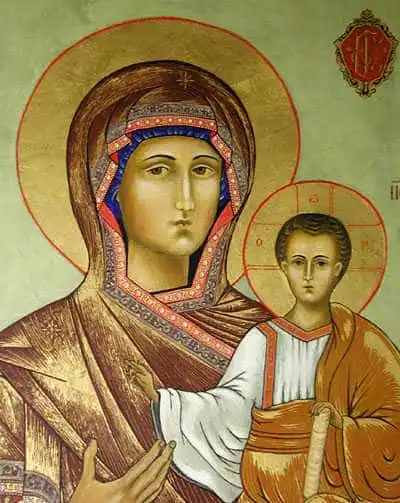
Icon of Mary and Jesus. See halo.
Hamingja is a word in Norse tradition for a supernatural force or power,
which could make its owner unbeatable and victorious, and give
happiness. It could appear in the form of a female protective spirit. See
also hugr and megin.
Hamr see hugr.
Hantu see badi.
Hasina is a word from Madagascar for a life giving force from the
ancestors, which is unevenly divided between individuals and families,
where royals are regarded to have the most. The quantity of hasina
increased by age, depending on experience, but also on closeness to death.
See also andriamanitra.
Healing is a term used for cures through other means than those
understood by natural science, such as faith-healing and many New Age
methods. Still, the word can also be used for cures through natural means.
The former kind of healing exists in many cultures, and usually consists of
some kind of force or energy transmitted from the healer to the healed.
This force can originate in the healer or come from a higher power, so that
the healer is a mere channel of it. The latter is the prevailing view among
Christians, whereas the former is common among non-agrarian cultures.
The ideas about the force transmitted are often very similar to life energy ideas such as that of qi.
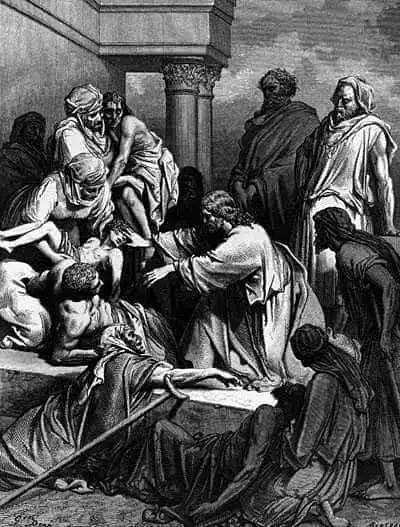
Christ healing the sick, by Gustave Doré (1832-1883). See Healing.
Heat is the most basic and tangible manifestation of energy, known and
explored by humans since he dawn of our species, and therefore essential
in the human world view. The fact that deceased persons get cold, links
heat to life. Preparing food by heating it has probably in the past also been
regarded as a way of inducing life force into it. The fact that heat can be
felt at a distance from its source has added to the human ideas of a flow or
radiation unlimited by bodies – quite in agreement with modern natural
science. The properties of heat are likely to have contributed in several
ways to ideas about a life force. It is even possible that some cultures
originally regarded heat as equal to the life force. Furthermore, both fire
and the rays from the sun (see these words) showed primordial man a
distinct relation between heat and light (see this word), so that a source of
heat was also expected to give light. But heat and light have not been
regarded as identical, since heat can be experienced also in the dark, and
spread to places light does not reach. Although the source of heat is often
visible, its emanation is not. Since the emanation, the radiation, is
beneficial, while its source can be as destructive as fire or unreachable as
the sun, this must have inspired ideas about an invisible life giving force
penetrating all. In natural science, heat is the result of particle movement,
wherefore the absolute zero of 0° Kelvin (-273° Celsius) is a state of
particle stillness. In modern physics, heat contains symbols as
contradictory as those of the traditional relation between its emanation
and its source: heat is a prerequisite for life, and also the foremost reason
for the increasing entropy in the universe, the transition from orderly to
disorderly energy that in the long run is expected to lead to the extinction
of the whole universe. See also negative entropy and zero point energy.
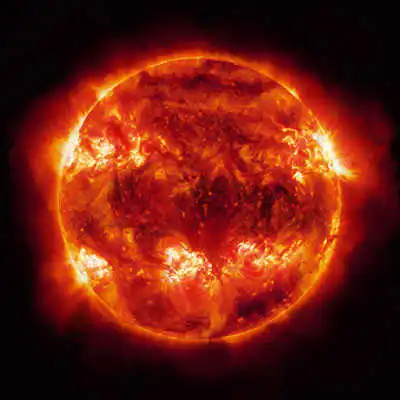
The sun, origin of all earthly heat.
HEF, Human Energy Field, is a collective name for life force in form of an
aura (see this word), used in parapsychological research. According to
John White and Stanley Krippner in their book Future Science, 1977, there
are at least 97 cultures around the world with such a belief.
Heka/Hike is an Egyptian deity of the healing arts, who is sometimes
mentioned as a synonym to life energy such as qi, because of the magical power that was
linked to the deity. See also Ankh, seichim and sekhem.
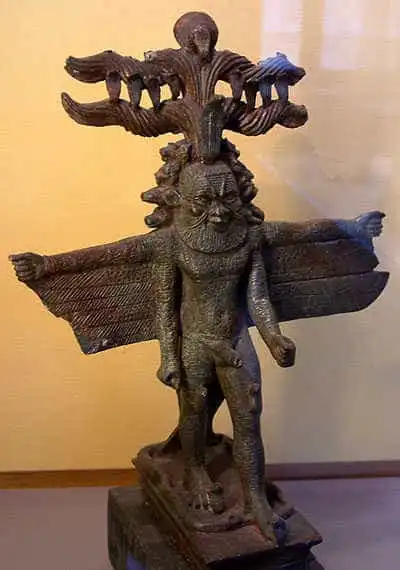
Heka (Hike), Egyptian deity of magic and healing, often depicted like this, as a combination of several deities.
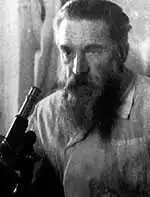
Heliobiology is a term introduced by the Russian biophysicist Alexander
L. Chizhevsky (1897-1964), for the sun's (helio) influence on Earth biology.
Some suggest instead the term bioheliology, or biocosmology, for any cosmic
influence on Earth biology. Chizhevsky had theories about sunspot effects
on the human psyche and on societal processes, so that civil unrest was
supposed to coincide with increases of sunspots. In experiments made in
1919-1922 he also showed how a lack of negative ions in the air influenced
bodies – something that many air cleaners today are equipped to counter.
For his societal theories, the Soviet government sentenced him to 16 years
in the Gulag.
Holism (from the Greek holos, whole) is the idea that parts of a whole
cannot be completely understood or explained other than through the
perspective of the whole. It also implies, particularly in modern use of the
word, that the whole is what rules the laws for the parts, and not the other
way around. A consequence of this is the idea that through the whole,
each part of it is linked, so that a change in one part influences every other
part. An opposing perspective to that of holism is reductionism, where the
whole is explained as a consequence of the laws of its smallest parts, such
as in quantum physics.
Holy (from old Scandinavian hälig, not to be harmed) is a concept that
belongs to the Western tradition of thought, especially the Christian one,
but is often applied also to phenomena in other cultures – with doubtful
results. When someone or something is holy in a Christian sense, a
reverence is supposed, which might not be the case in other cultures. What
may be the case is a charge of some magical power that sometimes has
similarities to qi. Another word, more frequently used about non-Christian
phenomena, is sacred. It implies some form of devotion, usually ritualized,
and ideas that those things or persons sacred have a value far above that
of ordinary things and people. In most cultures in the world, and through
history, the ancestors have been regarded as sacred in some way.
Holy Spirit (also Holy Ghost, in Latin spiritus sanctus, in Greek Hagion
pneuma, in Hebrew ruach hakodesh) is an expression for a part of the Biblical
God's nature, often described as his breath, by which he blows life into his
creatures, and fills chosen people with a healing power and inspiration (see
these words). In the Old Testament, the Holy Spirit appears to be
something distinctively separate from God himself, but in the New
Testament as interpreted by Christian thought, the idea of the Trinity
unites God, the Son, and the Holy Spirit, into one being. In this unity, the
Holy Spirit represents God's active force, the energy by which his
decisions are acted out. In most appearances, the Holy Spirit is a life-bringer, such as the breath by which God injects life into Adam in Genesis
2, and the Holy Spirit in the Gospel of Matthew making Mary pregnant
with Jesus. This life giving function of the Holy Spirit brings it close to the
nature of life energy concepts like qi. See also ruach, soul and spirit.
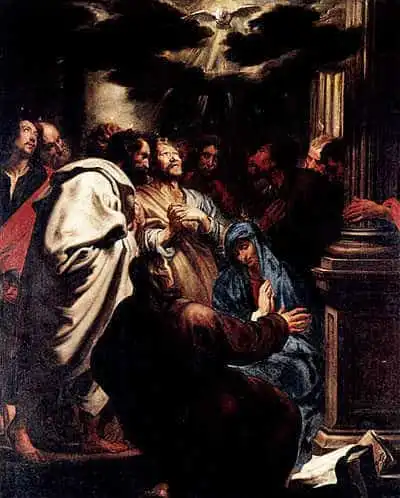
The Pentecost. Painting by Anthony van Dyck, 1618. The Holy Spirit is a dove, descending on the Apostles.
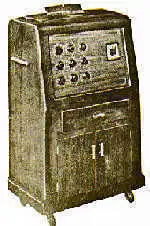
Homogeneity vibration is a concept introduced by the American
chiropractor Ruth Beymer Drown (1892-1963), for a treatment with radio
technique (see radionics) and homeopathic principles. She constructed a
machine, the Homo Vibra Ray Instrument, which was supposed to radiate
the same energy that it was to cure, similarly to how homeopathy uses
small quantities of poisons to counter their damaging effects. See also pre-physical energy.
Horme (Greek for 'driving force') is a term within Hormic psychology, a
theory from the 1920s by he British-American psychologist William
MacDougall (1871-1938). Horme is a driving force in living creatures,
linked to instinct and survival, which can explain any aspect of the human
psyche. Sometimes hormic energy is seen as a parallel to life energy such as qi, but this has
little to do with the theories of MacDougall.
Hormic energy see horme.
Huaca/waka/guaca is an expression from the Inca Indians and their
predecessors in Peru, which approximately stands for having a measure of
divinity or sacredness. It can be true for object, buildings, and the spirits of
the ancestors.
Hugr is an old Norse term for spirit, thought, and wish, but also for a
spiritual power that a human can use for magical deeds, in which hugr
flows from that person. It could be compared to consciousness, or thinking
as a force. In Norse belief, there was the body, lik, its life force or soul,
vördr, a kind of astral body, hamr, which might be comparable to the
subconscious or the emotions, the thought power hugr, and the divine
spirit, önd, which permeated the universe. See also hamingja and megin.
Huna see mana.
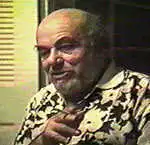
Hydroxy, also called Brown's gas, is a method, by electric treatment of
water, to get a gas of hydrogen and oxygen, which is believed to be an
effective energy source with particularly good properties. It was
developed during the 1970s by the Australian based electrician Yull
Brown (1922-1998), assisted by Todd R. Knudtson. The latter is sometimes
pointed out as the originator of a qi-like energy concept called pure non
manifest energy, but he has rejected this. Instead he claims that Brown's gas
is completely clean, and a sort of compound of matter and energy with
very special capacity. Still, it seems to be far from a synonym to life energy concepts like qi.
Life Energy Beliefs from A to Z
|
My Life Energy Books
Qi, prana, spirit, ruach, pneuma, and many other life forces around the world explained and compared. Click the image to see the book at Amazon (paid link).
The life energy qi (also chi or ki) explained, with several very easy exercises to awaken, increase, and use it. Click the image to see the book at Amazon (paid link).
|
My Other Websites
The ancient Chinese life energy
qi (
chi) explained and how to exercise it.
Creation stories from around the world, and the ancient cosmology they reveal.
What the Greek philosophers believed about the cosmos, their religion and their gods.
Taoism, the ancient Chinese philosophy of life explained. Also, the complete Tao Te Ching online.
Other Books of Mine
The Greek philosophers and what they thought about cosmology, myth, and the gods.
Click the image to see the book at Amazon (paid link).
This book examines Jungian theories on myth and religion, from Carl G. Jung to Jordan B. Peterson.
Click the image to see the book at Amazon (paid link).
The Taoism of Lao Tzu Explained. The great Taoist classic, translated and extensively commented chapter by chapter.
Click the image to see the book at Amazon (paid link).
Erroneous Tao Te Ching Citations Examined. 90 of the most spread false Lao Tzu quotes, why they are false and where they are really from.
Click the image to see the book at Amazon (paid link).
About me
I'm a Swedish author and historian of ideas, researching the thought patterns in creation myths. I've also written books about Taoism, the Tarot, and life force concepts around the world.
Click the image to get to my personal website.
 Cosmos of the Ancients
Cosmos of the Ancients Archetypes of Mythology
Archetypes of Mythology Tao Te Ching
Tao Te Ching Fake Lao Tzu Quotes
Fake Lao Tzu Quotes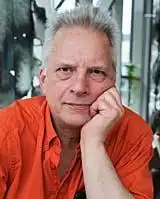 Stefan Stenudd
Stefan Stenudd






 Life Energy Encyclopedia
Life Energy Encyclopedia Qi — Increase your life energy
Qi — Increase your life energy